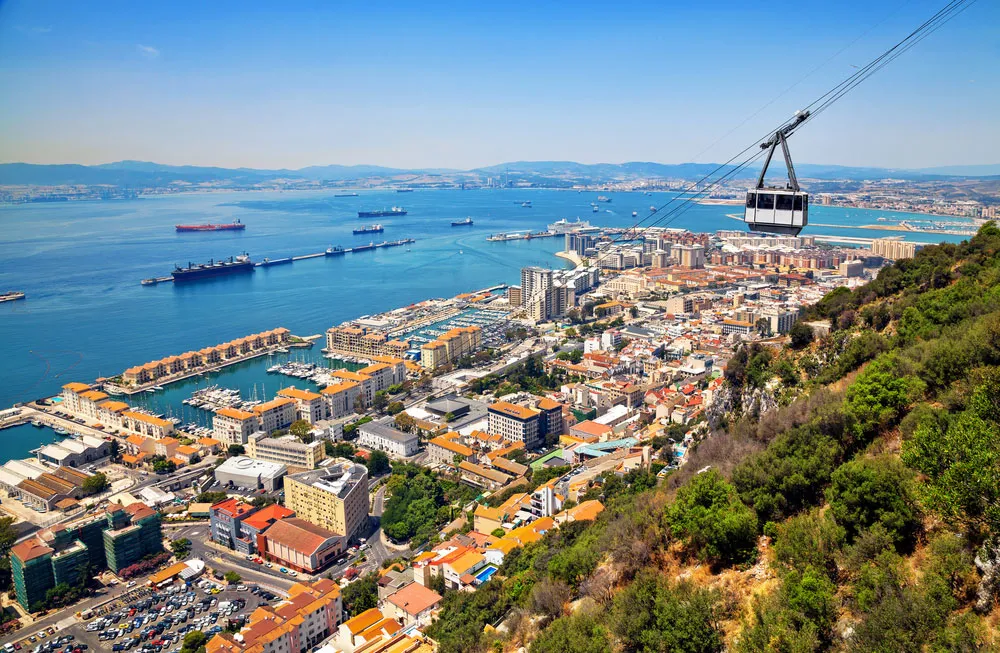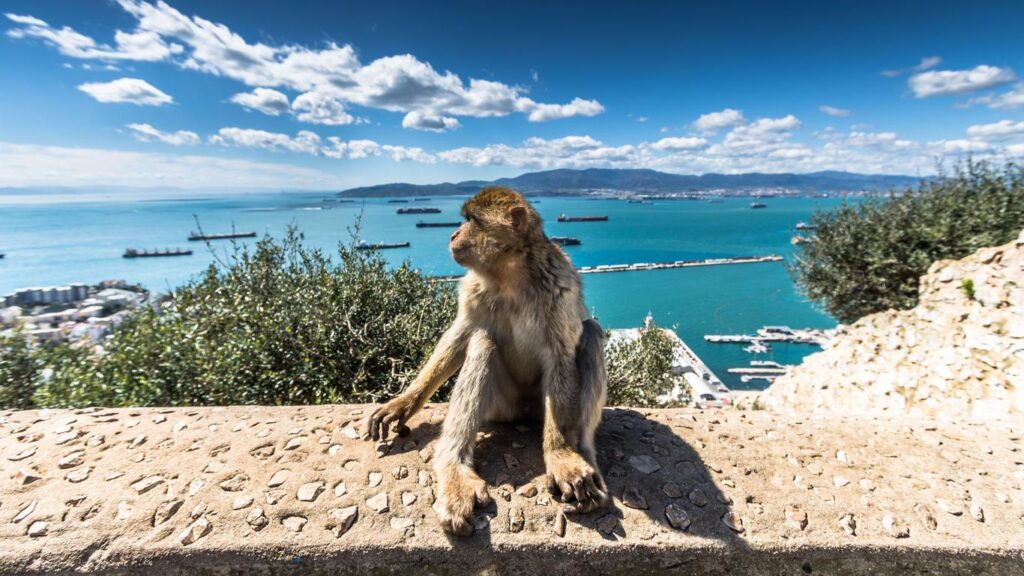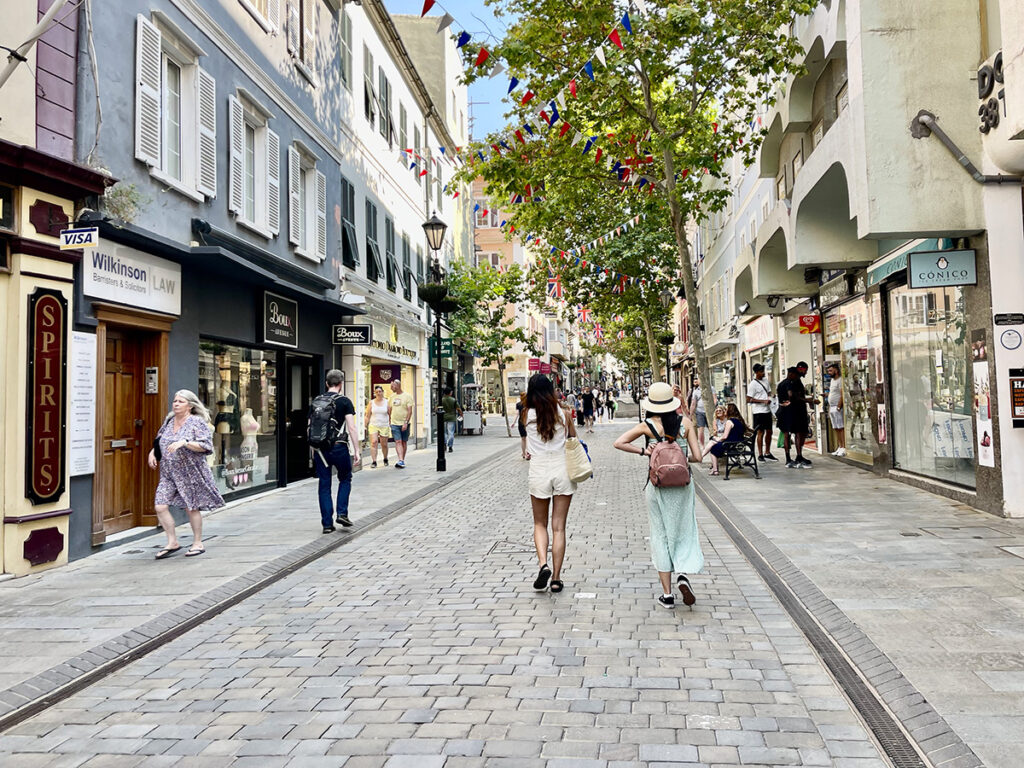Gibraltar: An English Island Dividing the Spanish and African Worlds

By: Habeeb Salloum/Arab America Contributing Writer
If one ever dreams of living on a small island yet still enjoy all the facilities of the 21st century, Gibraltar or as it is sometimes known, the Rock of Gibraltar, is the place. An English island dividing the Spanish and African worlds, the Rock, to many enshrouded with a romantic aura, is a unique place to spend a few days. It makes an exciting diversion from a Spanish or Moroccan tour to visit this tiny British colony. The whole country is actually one huge 200 million years old 125 m (400 ft) high limestone rock that is the meeting place of the Mediterranean and the Atlantic Ocean.
Connected to the southernmost tip of Spain by a sandy isthmus, it lies 23 km (14 mi) from Morocco. To the ancients, it was known as one of the Pillars of Hercules and the western end of humankind. Beyond lay the vast uncharted terrors of the Atlantic. Legend credits Hercules with opening up the straits between the two pillars which bear his name – Gibraltar in the north and Jebel Musa on the Moroccan side – to join the Mediterranean to the Atlantic.

The Rock’s present name is derived from Tariq ibn Ziyad, the Arab conqueror who occupied the Rock in 711 A.D. The Muslims called it Jabal Tariq (Mountain of Tariq) which through the years was corrupted to Gibraltar.
The Arabs, who made it a base for their conquest of the Iberian Peninsula, remained masters of the Rock for a near 800 years, becoming a part of the world of Islam. The Spaniards, in 1462, occupied it for over two centuries, but in 1704, it was taken over by the British and it has remained a British bastion ever since. In the intervening years, Spain made several attempts to recover the Rock, but to no avail. The British dug a series of tunnels under the Rock, today known as the Great Siege Tunnels and installed guns in an elaborate defence system that for years protected the Rock. Today, the Spaniards are using peaceful means to achieve their aims.
However, the Gibraltarians want no part of Spain. Even though they are a mixture of many races, religions and cultures, they believe themselves to be British.
A microscopic colony of the United Kingdom with a population of 30,000, Gibraltar is only 6 km (3.7 mi) long and .6 km (1/2 mi) wide. On this majestic craggy rock, which rises to a height of 500 m (1,400 ft), there are over 77 km (48 mi) of roads and an airport jutting out into the sea, a few yards from the Spanish border. It was built from the stone excavated when miles of military tunnels, during World War II, were burrowed in the Rock.
A naturalist’s paradise, this speck of a nation abounds in sub-tropical foliage. The western face is covered with vegetation, sloping down to terraced gardens that lead to the main town. At the south end there is a bleak point called Europa with a lighthouse and much of the eastern face was once paved to create water catchment’s areas. However, today this has fallen into disuse. The water supply for the rock is distilled from sea water.
The town of Gibraltar, located at the foot of the western slope, hugs a large historic harbour with a bustling marina. Its spine is a long main street with connecting lanes. On both sides there are a myriad of restaurants, travel agencies and shops, which supposedly sell duty free goods. Reasonably priced buys can only be made in perfume, jewellery and watches, but only liquor and tobacco are cheap.

For visitors with a little time to spare, the best way to explore Gibraltar is to take a circuit tour by taxi. The tour takes less than three hours and costs whatever price you can bargain – about $30. to $50. U.S. It includes a complete drive around the Rock with stops at important sights and a climb to near the top. There is much to see. Having been for centuries a fortress, the rock has impressive fortifications with old canons still pointing seaward, as if an enemy fleet is momentarily expected.
Alternatively, at a cost of $35.US return one can take a cable car from the exotic Alameda Gardens to the summit of the Rock. On all sides atop the Rock, there is an excellent panoramic vista. To the west, edging an azure sea, the Spanish coast with the towns of Algeciras and Tarifa are in full view; to the north, one can see clearly Andalusia’s Costa del Sol and Sierra Nevada Mountains; and to the South, across the Strait of Gibraltar, the North African Riff and Atlas Mountains loom in the distance. It is a breath-taking scene that a visitor rarely forgets.
Half- way down, there is a stop at the Apes’ Den where one can see and photograph the famous Barbary Apes – today, numbering some 200. Some historians believe that the Arabs first introduced these tailless macaques’ ancestors into Gibraltar. The Rock is the only place in Europe where Apes live in their natural state but contact with humans has made them quite tame.
However, one should not approach too closely. They can become dangerous if provoked by visitors. The British garrison has an ‘Officer in Charge of Apes’ who looks after the feeding and their general well-being. Apparently, the legend ‘when the apes disappear from the Rock, the British will leave’ is still doing well.
At the end of the cable car ride, one should roam the town for a few hours to savour this bit of Britain, seemingly out of place in a foreign world. With the people, one can converse in English or Spanish, in which almost all the inhabitants are fluent. Nevertheless, even though the people are a mixture of Spanish, United Kingdom and North African stock, they all claim British ancestry.
A good example of this was our taxi driver. On an on-going basis he told us how proud he was of being English. When parting I asked him his name. To my astonishment he quoted a Spanish surname, then smiled and walked away. To me the name told all. People are what they think they are.



